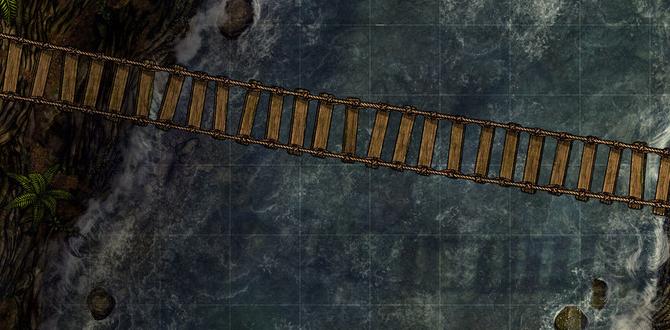Bhutan Best Neighborhoods: Essential Guide
Discovering the best neighborhoods to stay in Bhutan means finding serene valleys, vibrant cultural hubs, and peaceful retreats. This guide simplifies your choice by highlighting top areas for an unforgettable Bhutanese experience, focusing on accessibility, local charm, and breathtaking scenery for every traveler.
Planning a trip to the Land of the Thunder Dragon can feel a bit overwhelming, especially when you haven’t been there before. You want to soak in the unique culture, enjoy stunning landscapes, and feel comfortable where you rest your head each night. Finding the right neighborhood to base yourself in is a big part of making your Bhutan journey smooth and memorable. This guide is here to help you navigate those choices with ease, offering practical tips so you can focus on the magic of Bhutan.
Why Choosing the Right Neighborhood Matters in Bhutan
Bhutan is a country that thrives on a balance of tradition and modernity, and this is reflected in its diverse towns and villages. The “best” neighborhood truly depends on what kind of experience you’re seeking. Are you looking for the buzz of a capital city, the tranquility of a mountain valley, or a place steeped in spiritual significance? Each region offers a unique slice of Bhutanese life.
For travelers, especially those managing specific needs like comfort during long journeys or planning for children, understanding the local environment is key. Knowing the accessibility, availability of amenities, and the general vibe of an area can significantly enhance your trip. Think of it as choosing the perfect setting for your adventure – it sets the tone for everything that follows. We’ll explore areas that offer a great blend of authentic experiences and practical conveniences.
Understanding Bhutan’s Main Destinations
Bhutan is not about sprawling metropolises. Instead, it offers charming towns and valleys, each with its distinct character. When we talk about neighborhoods in Bhutan, we’re often referring to the distinct areas within these towns or the unique appeal of specific valleys.
The major hubs are usually where most international visitors spend their time. These include:
- Thimphu: The capital city, offering a mix of government, culture, and commerce.
- Paro: Famous for its international airport and the iconic Tiger’s Nest monastery.
- Punakha: Known for its ancient dzong and beautiful subtropical valley.
- Bumthang: Considered the spiritual heartland of Bhutan, with numerous temples and valleys.
Beyond these, smaller towns and villages offer a more intimate glimpse into rural Bhutanese life, often nestled in breathtaking natural settings.
Thimphu: The Cultural and Commercial Heart
Thimphu is Bhutan’s capital and largest city, though it retains a surprisingly relaxed and unhurried atmosphere. It’s a fascinating blend of tradition and emerging modernity, with no traffic lights (policemen direct traffic with graceful, almost dance-like gestures) and a strong emphasis on preserving Bhutanese culture.
Why Stay in Thimphu?
If you want to experience the pulse of modern Bhutan while still being deeply connected to its traditions, Thimphu is your spot. It offers the most comprehensive range of services, from diverse dining options and shopping to cultural sites and administrative centers. It’s a great starting point for many travelers, offering a good introduction to the country.
Key Neighborhoods/Areas in Thimphu to Consider:
- The City Center (around Norzin Lam): This is the most bustling area. You’ll find hotels, guesthouses, restaurants, shops, and government offices. It’s convenient for getting around and exploring on foot.
- Further North/South of the City: As you move away from the immediate center, areas become quieter, offering more serene accommodation options, often with better views of the surrounding hills. These might be ideal if you prefer a more peaceful stay but still want easy access to the city’s amenities.
Who Thimphu is Best For:
- First-time visitors: Offers a good overview of Bhutanese life.
- Those interested in culture and arts: Home to museums, art schools, and the National Memorial Chorten.
- Travelers seeking conveniences: More dining and shopping options than other areas.
- Families: Parks and family-friendly attractions are more prevalent here.
Traveler Tip for Thimphu:
If you’re traveling with young children or managing adult diaper needs for extended travel days, staying near the city center in Thimphu is beneficial. It provides easier access to pharmacies and shops should you need to replenish supplies. Consider accommodations with lifts if mobility is a concern, as some older Bhutanese buildings may not have them.
Paro: Gateway and Iconic Scenery
Paro is often the first and last stop for international visitors due to its airport, making it a convenient and picturesque base. It’s a beautiful valley dotted with traditional farmhouses and sacred sites. The highlight for many is the trek to the magnificent Taktsang Monastery (Tiger’s Nest).
Why Stay in Paro?
Paro offers a more laid-back atmosphere than Thimphu but is still well-equipped for tourists. Its stunning valley views, proximity to the airport, and the sheer cultural weight of its landmarks make it an excellent choice. It’s a place where you can easily step out and feel immersed in Bhutan’s natural and spiritual beauty.
Key Neighborhoods/Areas in Paro to Consider:
- Near the Airport: Offers ultimate convenience for arrivals and departures. While not the most scenic, it’s practical.
- Town Center: Similar to Thimphu, this area around the main road has hotels, restaurants, and shops. It’s walkable and central.
- Outlying Areas/Villages: Many lodges and guesthouses are scattered throughout the valley, offering tranquil settings with beautiful views of rice paddies and mountains. These are often preferred for a more immersive nature experience.
Who Paro is Best For:
- Those with short stays: Ideal for arrival/departure days.
- Nature lovers: The valley is breathtaking, and trekking opportunities abound.
- Spiritual seekers: Home to numerous monasteries and temples.
- Families and individuals prioritizing comfort and ease: The infrastructure for tourism is well-developed.
Traveler Tip for Paro:
For families or individuals requiring specific comfort items like children’s diapers or adult incontinence products, Paro town center offers the best access to essential supplies. If staying in a more remote lodge, it’s wise to pack a sufficient supply to avoid any last-minute rushes. Ensure your accommodation has easy access for strollers or any mobility aids.
Punakha: The Ancient Capital and Serene Valley
Punakha served as the capital of Bhutan until 1955 and still holds immense historical and cultural importance. It’s situated in a fertile, lower-altitude valley, making its climate milder and its landscapes lush with rice paddies and fruit trees. The Punakha Dzong, located at the confluence of two rivers, is arguably Bhutan’s most beautiful fortress.
| Area/Valley | Key Vibe | Best For | Accommodation Style |
|---|---|---|---|
| Punakha Valley | Tranquil, historical, fertile farmland | Relaxation, history buffs, nature lovers | Boutique hotels, farm stays, lodges |
| Near Punakha Dzong | Central to attractions, scenic riverfront | Easy access to main sites, picturesque views | Hotels, guesthouses with river views |
| Rural Punakha villages | Authentic, peaceful, immersed in nature | Experiencing local life, serene retreats | Homestays, simple guesthouses |
Why Stay in Punakha?
Punakha offers a slower pace of life and a tangible connection to Bhutan’s past. The warmer climate makes it a pleasant destination, especially outside the peak winter months. It’s perfect for those seeking beauty, history, and a peaceful escape.
Key Neighborhoods/Areas in Punakha to Consider:
- Around the Punakha Dzong and Town: This is the most convenient area for accessing the dzong and other important sites like the Chimi Lhakhang. You’ll find a good selection of tourist-oriented accommodations here.
- Along the River Valleys: Many beautiful lodges and resorts are spread further along the valley, offering stunning views and more secluded experiences. This is ideal for a romantic getaway or a quiet retreat.
Who Punakha is Best For:
- Honeymooners and couples: The romantic scenery and tranquil atmosphere are perfect.
- History enthusiasts: The ancient dzong and other historical sites are captivating.
- Travelers seeking relaxation: The gentle pace and natural beauty are ideal for unwinding.
- Families wanting gentle exploration: Shorter, easier walks are available.
Traveler Tip for Punakha:
Consider the accessibility of your chosen accommodation in Punakha. Some of the most charming lodges might be down winding roads or involve short walks. If you or a family member requires easy access, confirm with your hotel about pathways and transport options. Packing extra essentials, including comfort items like adult or child diapers, is advisable as purchase options are more limited here than in Thimphu or Paro.
Bumthang: The Spiritual Heart and Four Valleys
Bumthang is not a single town but a compilation of four beautiful valleys: Chokhor, Tang, Ura, and Chhume. This region is considered the spiritual heartland of Bhutan, boasting a multitude of ancient temples, monasteries, and sacred sites, including the revered Jambay Lhakhang and Kurjey Lhakhang.
Why Stay in Bumthang?
If your travel goals include deep spiritual immersion, understanding Bhutanese Buddhism, and experiencing a more rural, less touristy side of the country, Bumthang is unparalleled. The landscapes are diverse, ranging from wide valleys to rolling hills and forests, and the atmosphere is profoundly peaceful.
Key Areas within Bumthang Valleys:
- Jakar Town (Chokhor Valley): This is the main commercial center for Bumthang and where most tourist facilities are located. It’s home to the impressive Jakar Dzong.
- Tang Valley: Known for its pristine natural beauty and rural charm, home to the Phobjikha Valley’s famous wetlands and the Ogyen Choling Palace Museum.
- Ura Valley: The highest and most remote of Bumthang’s valleys, known for its traditional village and the Ura Festival.
Who Bumthang is Best For:
- Spiritual pilgrims: The concentration of sacred sites is unmatched.
- Culture enthusiasts: Offers a deep dive into Bhutanese traditions and history.
- Nature and hiking lovers: The valleys provide beautiful trekking opportunities.
- Those seeking off-the-beaten-path experiences: Fewer tourists mean a more authentic feel.
Traveler Tip for Bumthang:
Bumthang’s more remote nature means that supplies are scarcer. If you or your family members rely on specific personal care items, especially adult or child diapers for comfort or necessity, it is crucial to bring an ample supply from Thimphu or Paro. This will prevent any stress or inconvenience during your stay in these serene valleys. Always confirm with your lodge about vehicle access and the general terrain.
Other Notable Areas for a Unique Stay
While the main towns attract most visitors, Bhutan offers other gems worth considering for a truly unique experience. These might be smaller towns or specific valleys known for particular attractions or atmospheres.
- Phobjikha Valley (Gangtey): Famous as the winter roosting ground for the endangered Black-necked Cranes, this broad glacial valley offers stunning scenery and a tranquil, rural setting. It’s an ideal place for nature walks and experiencing a slower pace of life. Accommodations here tend to be lodges and guesthouses focused on nature and eco-tourism.
- Haa Valley: A less-visited valley near the Tibetan border, known for its stunning natural beauty, ancient temples, and the distinct culture of its inhabitants. It offers a very peaceful and authentic experience, with fewer tourist facilities but more opportunities for quiet exploration.
Traveler Tip for Smaller Valleys:
When choosing to stay in less-developed areas like Phobjikha or Haa, stocking up on personal essentials is paramount. This includes any specialized comfort items like adult diapers and child diapers, as well as any other personal care products you might need. The availability of pharmacies or general stores will be very limited, if present at all.
Factors to Consider When Choosing Your Bhutanese Neighborhood
Selecting the perfect base in Bhutan involves a few practical considerations. It’s not just about scenery; it’s about comfort, accessibility, and aligning with your travel goals.
1. Accessibility and Transportation
Bhutan’s infrastructure is developing, but some areas are more accessible than others. Thimphu and Paro have the most developed road networks and are closest to essential services. Consider how you will travel between places – private car, public transport, or walking. If you have mobility issues or are traveling with young children, easy road access and proximity to amenities will be a priority.
- Easy Access: Thimphu, Paro town, Punakha town center.
- Moderate Access: Many lodges outside main towns, requiring short drives.
- Limited Access: Remote villages, requiring longer drives on winding roads or short walks to reach.
2. Amenities and Services
What do you need readily available? For most travelers, this means access to decent restaurants, souvenir shops, and perhaps ATMs. For those with specific needs, crucial amenities might include pharmacies or hospitals. If you require particular items for comfort or health, such as adult diapers, child diapers, or specific medications, research the availability in your chosen area beforehand. It’s almost always safer to pack a generous supply.
You can find a list of essential services and healthcare facilities via the Ministry of Health and Bhutanese government resources to gauge proximity.
Essential Amenities to Look For:
- Pharmacies
- ATMs
- Restaurants
- Tourist information centers
- Clean, accessible restrooms
3. Atmosphere and Travel Style
Are you an early riser who loves a bustling morning market, or do you prefer the quiet solitude of a mountain retreat? Bhutan offers both. Thimphu has more of a city feel, while Paro and Punakha are scenic and relaxed. Bumthang offers a deep dive into spirituality and rural life.
Match your style:
- Adventure/Trekking: Base yourself near trailhead access points, which might be outside main towns.
- Relaxation/Wellness: Look for lodges in valleys like Punakha or more secluded areas of Bumthang.
- Cultural Immersion: Areas within walking distance of major dzongs and monasteries, or villages known for traditional crafts.
- Family Travel: Thimphu offers more child-friendly attractions; Paro’s scenic drives can be enjoyable. Ensure easy access and facilities if managing diapers for children.
4. Duration of Stay
If you have only a few days, staying in Paro or Thimphu makes sense for convenience. For longer stays (a week or more), you can explore multiple regions and enjoy the slower pace of valleys like Punakha or Bumthang.
Accommodation Types in Bhutan’s Neighborhoods
The type of accommodation you choose will also influence your experience of a neighborhood. Bhutan offers a range from comfortable hotels to charming guesthouses and unique lodges.
- Hotels: Primarily found in Thimphu, Paro, and Punakha town centers. They offer standard amenities, often with restaurants and reliable Wi-Fi.
- Guesthouses: A more personal and often more affordable option, offering a glimpse into local hospitality. They are spread across most towns and popular valleys.
- Farm Stays: Excellent for cultural immersion, providing a chance to stay with local families and experience their way of life. Available in rural areas.
- Luxury Lodges: High-end properties, often in scenic locations outside town centers, offering premium services and amenities.
Traveler Tip for Accommodation:
When booking accommodation, especially if you have specific needs like requiring easy access for strollers, or if you need to manage supplies for adults or children (e.g., secure storage for diapers, quiet during rest times), communicate these clearly with your hotel in advance. Many Bhutanese establishments are incredibly hospitable and will do their best to accommodate you.
Packing Essentials for Stress-Free Travel
Beyond choosing your neighborhood, smart packing is key to a comfortable trip. For families and individuals managing continuous needs, specialized items are crucial.</





